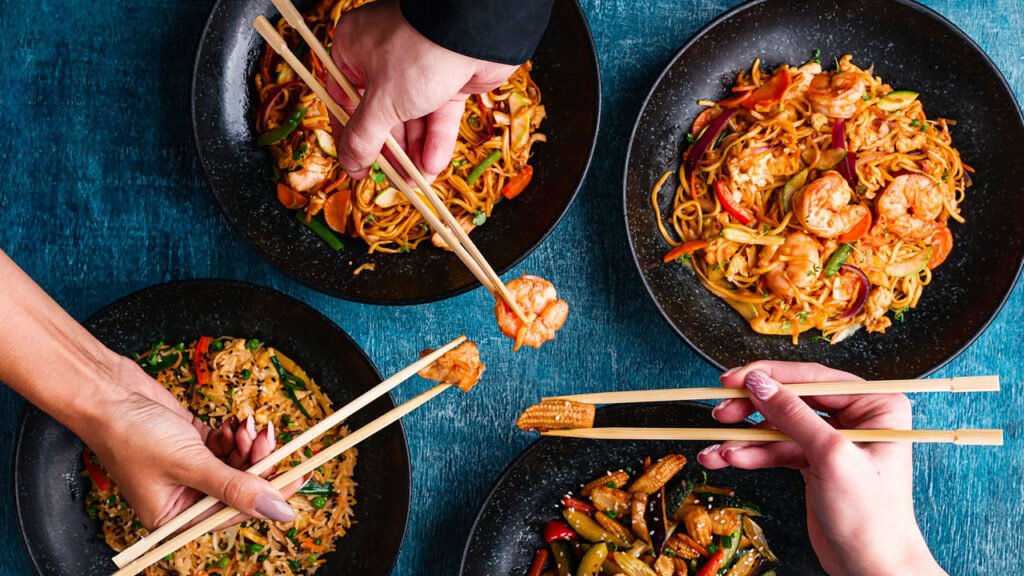Using chopsticks can seem like a daunting task for those unfamiliar with Asian culinary traditions. However, with a bit of patience and practice, anyone can learn this skill. This article aims to demystify the process, providing a step-by-step guide on how to hold chopsticks correctly, along with some tips to enhance your proficiency.
Understanding the Basics
Chopsticks have been a staple utensil in many Asian countries for thousands of years. They are not just tools for eating but also an integral part of the culture and etiquette in countries like China, Japan, Korea, and Vietnam. Before diving into the mechanics of using chopsticks, it’s essential to appreciate their cultural significance and the etiquette surrounding their use.
The Correct Grip: Step-by-Step
Learning to hold chopsticks correctly is the foundation of mastering their use. Here is a detailed breakdown:
Step 1: Positioning the First Chopstick
Hold one chopstick like a pencil, approximately one-third of the way from its top end. Rest it on the crook of your thumb and against the side of your index finger. This chopstick remains stationary and serves as the base for the action of the other chopstick.
Step 2: Adding the Second Chopstick
Place the second chopstick against your index finger, parallel to the first one, and hold it with your thumb, index, and middle fingers, similar to how you would hold a pen. The key is to ensure that the tips of the chopsticks are aligned and that you can move the top chopstick up and down while the bottom one remains steady.
Step 3: Practicing the Motion
The movement of using chopsticks comes primarily from the top chopstick, which is controlled by your index and middle fingers. Practice by picking up small objects to improve your dexterity. Remember, the bottom chopstick should remain relatively stationary, providing stability and support.
Common Challenges and Solutions
Many beginners face a few common challenges when learning to use chopsticks. Here are some tips to overcome them:
- Slipping Chopsticks: Ensure your hands are dry, and if necessary, use chopsticks with textured tips to provide better grip on food.
- Misaligned Tips: Regularly check that the tips of your chopsticks are parallel to make grasping food easier.
- Hand Fatigue: Practice regularly to build up strength in your fingers and hand, but don’t overdo it. Short, frequent practice sessions are more effective than long, infrequent ones.
Advanced Techniques and Etiquette
Once you are comfortable holding and using chopsticks for basic tasks, you can start to refine your technique and learn more about the etiquette:
Precision and Delicacy
As you become more adept, focus on using chopsticks with precision and delicacy, especially when dealing with fragile or slippery foods. This not only demonstrates skill but also respect for the food and its preparation.
Cultural Etiquette
Different cultures have specific etiquettes associated with chopstick use. For example, in Japan, it is considered rude to pass food directly from your chopsticks to someone else’s. Familiarizing yourself with these nuances can enhance your dining experience and show respect for the culture.
Practice Makes Perfect
The key to mastering chopsticks is consistent practice. Start with simple tasks and gradually move on to more challenging ones. Here are some exercises:
- Picking Up Different Textures: Practice with foods of varying textures and sizes, from slippery dumplings to small grains of rice.
- Precision Tasks: Try arranging small objects or drawing simple shapes in a tray of sand or rice to improve your control and precision.
Conclusion
Learning to hold and use chopsticks proficiently is a rewarding skill that opens up a new dimension of experiencing Asian cuisines and cultures. While it may seem challenging at first, with persistence and practice, anyone can become adept at using these versatile utensils. Remember, the journey of mastering chopsticks is as much about appreciating the cultural traditions as it is about the technique. Embrace the learning process, and enjoy the rich culinary experiences that await.

